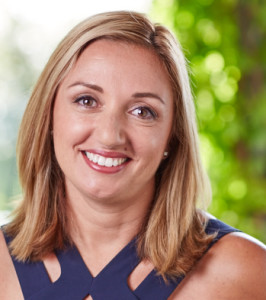More Work Needed Before AU Can Trade on Viewable Impressions


The move towards viewability is strongly supported in Australia, but more work still needs to be done before the market can trade on viewable impressions.
Interactive Advertising Bureau (IAB) Australia CEO Alice Manners explains that technological challenges, such as varying ad units and metrics, are making it tough to ensure accurate inventory measurement and fair trade. So while there is keen industry interest, there is still some ways to go in rolling out viewable impressions in Australia, Manners says in this Q&A with ExchangeWire.
She also discusses key highlights in the Australia/New Zealand (ANZ) ad tech industry this year, including challenges posed by ad blockers, and outlines the IAB's focus areas for 2016 and potential growth in the programmatic market.
ExchangeWire: What were the key trends, or hot topics, that drove the ANZ ad tech market this year?
Alice Manners: For more years that I care to remember, we were told that "this year would be the year of mobile". Well, in 2015, that finally came true. The ANZ market was all about mobile, mobile, and more mobile.
Mobile advertising spend increased 84%, to reach AUD$1.1bn for the financial year 2015; making mobile ad spend now larger than magazine or outdoor ad spend. It's not surprising as it reflects how marketers are playing catch-up to the customers who are rapidly adopting mobile as their screen of choice.

IAB Australia CEO Alice Manners
Our Mobile Ratings Report with Nielsen found that more than 12.5 million Australians, aged 18 and above, were using mobile web or apps, while 7.4 million were using tablets. In fact, more time was spent on smartphones than any other digital device. At more than 33 hours a month, and cumulatively more than 200 sessions – and an incredible diversity of content – were consumed on mobile devices. Among these, 75% used mobile for banking, 70% to shop, 70% for video or movies, and 66.7% for music.
All signs suggest growth in mobile ad spend will continue. It would be remiss of me to not mention the other rising star: video. This year, online video marketing shifted up a gear and became a key way for marketers to build brands. Video advertising reflected this shift, growing 98% year-on-year to reach AUD$389m for financial year 2015. It now accounts for 16% of all General Display advertising expenditure with FMCG, retail, and motor vehicles, which are the top three industry categories using video advertising. Interestingly, FMCG is now over-represented in Video Display advertising, compared to General Display, at a 15% share, which is almost three-times higher than its share in total General Display.
Were there any surprises or disappointments, with regards to local industry developments?
I was pretty bullish in my predictions that online ad expenditure would hit AUD$5bn in 2015, and was pretty pleased when the market comfortably surpassed this mark to reach AUD$5.3bn. That's a 20% year-on-year growth and puts online advertising at a 41% share of total ad revenue, accounting for the largest advertising segment in Australia.
That online advertising has achieved consistent year-on-year double-digit growth over the past decade is a testament to the rewarding relationships marketers are building with consumers through interactive media, and shows the vital role interactive advertising now plays in the marketing mix.
What remained top challenges for marketers this year, as well as ad tech vendors, agencies, and other market players?
Hands down the top challenges were viewability and ad blocking.
Globally, the IAB has supported the move to viewability and is focused on developing a robust digital measurement currency that can help act as a 'digital GRP', which enables us to understand cross-media behaviour.
However, the Australian market is still not in a position to trade on viewable impressions, thanks to some technological challenges. Different ad units, browsers, ad placements, vendors, and measurement methodologies are yielding different numbers. This means a significant proportion of inventory is not being measured accurately and that makes it difficult to trade fairly.
It's hard when there is such keen interest, but the discrepancies mean we have to set reasonable expectations around monitoring viewable impressions. IAB Australia is working with tech vendors, publishers, agencies, and marketers to review developments in this area and to educate the market accordingly.
Ad blocking also is still a challenge. In fact, IAB US CEO Randall Rothenberg called it the "crise du jour". I think those of us in the industry know and understand the role the advertising-funded economy plays in underpinning much of online content and services; but I'm not sure if the average Australian consumer completely comprehends this economic reality.
Indeed, until now, there wasn't a need for them to do so. So there is work to be done in helping consumers understand the economic realities, but publishers also still need to step up and take responsibility for the user experience. After all, if consumers install ad blocker tools, they must be annoyed by certain kinds of ad units; so we still need to focus on an optimal user experience.
With viewability, ad measurement, ad fraud, and ad blockers some of the hot keywords this year, how do you see these playing out in 2016?
The rollout of viewable impressions has been a long one, and we are still not there yet, so it's definitely a journey. IAB Australia supports the move towards viewable impressions, but there is still work that needs to be done before we are in a comfortable position to trade on these in the Australian marketplace.
Getting to that point involves all of us rolling our sleeves up and working together. So, while the current debate in our market about viewability is healthy and welcome, we need to acknowledge it is still a time of transition. Technology and practical elements such as billing systems have to catch up. We have to get it right.
Moving on to ad measurement, our big focus in 2016 will be taking the next steps in our major upgrades to the digital audience measurement system in Australia. In early-2016, our Mobile Ratings Report will be replaced by Digital Ratings Monthly, which will fuse smartphone and tablet panel data with Nielsen's home and work PC panel data and tagged website data. Digital Ratings Monthly will be the base for further development and this will see Nielsen transition to daily delivery of digital audience data through Digital Content Ratings, which is slated for launch in mid-2016.
Regarding ad blockers, IAB UK conducted a survey last month assessing consumer response in order to find out whether using ad blocking would mean some websites would have to stop providing free content or charge people to use them. Interestingly, 61% of respondents said they would prefer to see ads to access content for free rather than pay to access content. Only 4% indicated they were willing to pay for content.
The UK study seems to suggest if more Australians understand that content is free because of the ads, perhaps they may not choose to block ads. We plan to conduct a similar study in Australia in 2016 to assess the landscape and how important, or necessary, it is for us to generate awareness of the ad-funded internet economy amongst online consumers.
We'll also be focused on helping publishers deliver an optimal user experience, launching the L.E.A.N. Ads Programme in 2016. Supported by IABs around the world, L.E.A.N. stands for 'Light, Encrypted, Ad-choice-supported, and Non-invasive' ads. These are the principles that will help guide the next phases of advertising technical standards for the global digital advertising supply chain. Ultimately, it will help us as an industry improve the experience for consumers, while also supporting industry players.
In terms of ad fraud, our 'State of the market: Marketing & Advertising Technology' report, published in September, found that some 48% of Australian agencies weren't using brand safety technology and 52% of publishers weren't using ad fraud detection. Considering the significant brand concerns around these issues, the question has to be asked: Why are agencies and publishers not trying to address this?
A big focus in 2016 will be to work with industry players to encourage them to follow best practice when it comes to mitigating ad fraud.
What will the top five priorities be for IAB AU in 2016?
Our top five priorities are simple and clear; and we'll be working closely with our eight councils and working groups, as well as our 200-plus members, to address them together:
- – Maximising ad viewability
- – Supporting an ad-funded internet
- – Tackling ad fraud and building brand safety online
- – Making sense of measurement
- – Ensuring privacy for consumers
How do you see the programmatic market taking shape in the new year?
Programmatic buying has grown from the simple idea of automating a process in order to gain efficiencies, to an opportunity to help deliver on much of digital marketing's promises –speed, combined with smart, true data integration, and creative flexibility.
But, it's not a set-and-forget industry. It needs people and machines to work to their fullest potential, and the best examples of what programmatic can be are those that integrate human judgement and creativity, with the efficiency and processing power of computers. We are seeing marketers are getting more directly involved in the process, further proof of the need for a human factor in this automated process.
As an industry, we can't just make noises about integration as we did in the past. Getting tech integration right is essential to push programmatic ad serving forward. And this incorporates new and more sophisticated ways of measuring success, which need to be developed, particularly as programmatic buying is used increasingly for branding purposes.
Going forward, programmatic will continue to stretch beyond desktop inventory buying into the areas of video, mobile, outdoor, and TV advertising.
In such a fragmented and, at times, fickle world of media consumption, systems to automate and assist in audience-buying are going to be ever more essential. The quality and monitoring of inventory will be key to the success of this rapidly expanding industry.
Ad BlockingAdvertiserAgencyAPACAustraliaBrandingMeasurementMedia SpendMobileProgrammaticPublisherViewability








Follow ExchangeWire